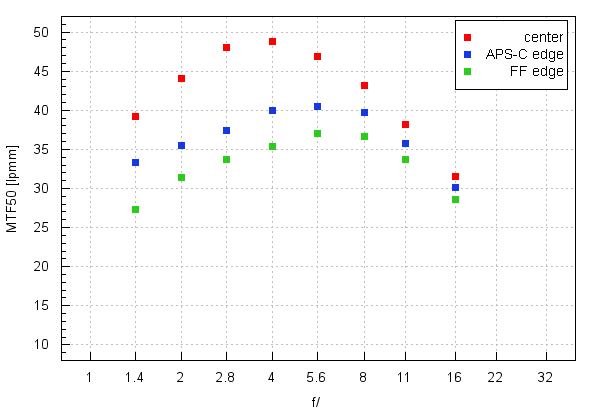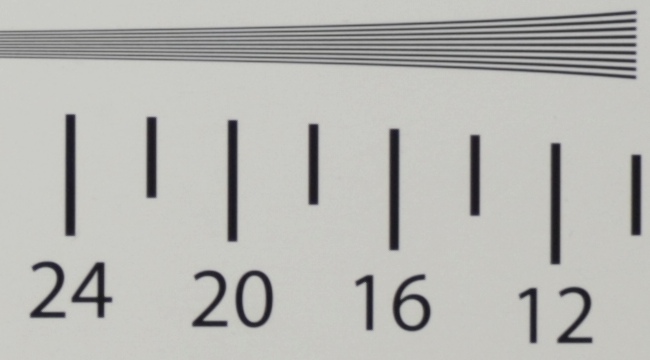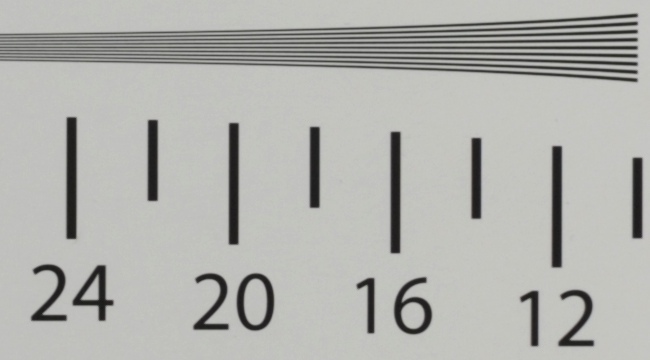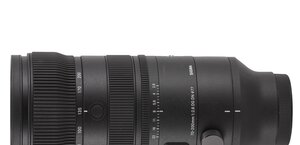Nikon Nikkor AF-S 28 mm f/1.4E ED
4. Image resolution
Let’s check how the tested instrument compares here.

Please Support UsIf you enjoy our reviews and articles, and you want us to continue our work please, support our website by donating through PayPal. The funds are going to be used for paying our editorial team, renting servers, and equipping our testing studio; only that way we will be able to continue providing you interesting content for free. |
- - - - - - - - - - - - - - - - - - - - - - - - - - - - - - - - - - - - - - - - - - - - - - - -
Undoubtedly the frame centre looks exceedingly well. Such a difficult construction is able to offer you a good image quality already at the maximum relative aperture. What’s more, the quality of images increases swiftly on stopping down, reaching its peak by f/4.0 with a value of 48.8 lpmm. That result is even a tad better than the one reached by the Nikkor AF-S 105 mm f/1.4E ED, tested and praised by us not so long ago.
Still the results on edges of the frame are the real measure of a wide-angle lens. The performance on the edge of the smaller APS-C/DX sensor is beyond reproach – already at the maximum relative aperture the MTFs exceed distinctly 30 lpmm so images at that point can be called fully useful. Near f/4.0 –f/8.0 the lens reaches a high level of 40 lpmm.
The only reservations we have concern just the edge of the full frame sensor and the closest range of the maximum relative aperture. When you stop down the aperture to f/1.8, though, the image becomes useful. It’s worth mentioning that, on the edge of full frame and by f/1.4, the huge Zeiss Otus 28 mm f/1.4 had a result a bit below 30 lpmm. It performed better than the Nikkor but the difference is not big; mind you for the range from 24 to 35 mm focal lengths we acclaimed the Otus the best contemporary lens which have been produced recently. Being just slightly worse when compared to such a device is nothing the Nikkor should be ashamed of.
To sum up the new Nikkor AF-S 28 mm f/1.4E ED is a very sharp lens, resolution-wise, and one of the best Nikkors I have been tested recently. In this category it is at least one class above its slower brother, the Nikkor AF-S 28 mm f/1.8G. A round of applause!
At the end of this chapter, traditionally, we present crops taken from photos of our resolution testing chart, saved as JPEG files at the same time as RAWs we used for the analysis above.
| Nikon D3x, JPEG, f/1.4 |
 |
| Nikon D3x, JPEG, f/4.0 |
 |






